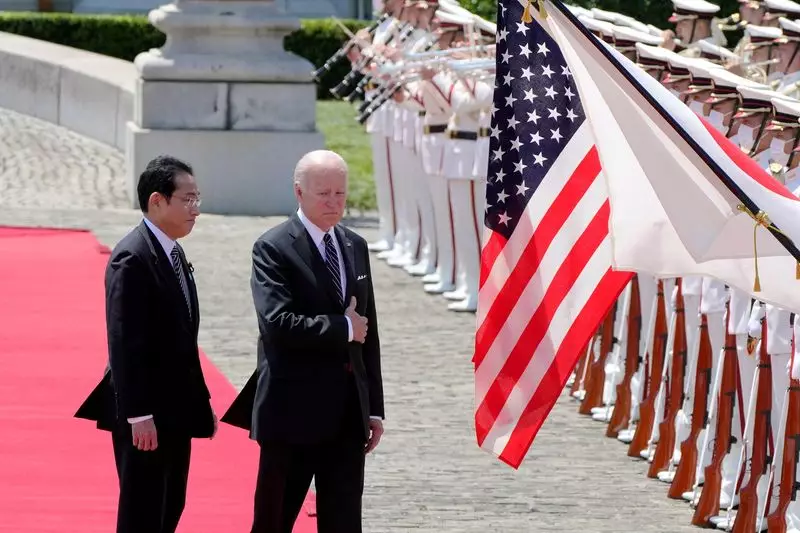President Joe Biden is making moves to rejuvenate the interest in a plan to establish the first high-speed rail system in the United States, using the technology of Japanese bullet trains. This initiative is reported to be among the topics of discussion when he meets with Japan’s Prime Minister Fumio Kishida in Washington this week. Amidst discussions, support towards the multi-billion-dollar Texas project to link Dallas and Houston is expected to be highlighted. However, there are mixed opinions on the level of progress that will be announced publicly following the talks.
The United States has long been attracted to the idea of high-speed rail systems due to vast distances between major cities, high commuter populations, and limited public transportation options. Various proposals have been put forth over the years, including the Dallas-Houston route, which has faced hindrances such as political disagreements, land ownership complications, and escalating costs. Previous attempts to kickstart similar efforts have been met with resistance from private landowners along the proposed route, making progress challenging.
With the backing of President Biden and Prime Minister Kishida, supporters of the high-speed rail project in Texas believe that it could attract significant investment from both public and private sectors. The planned 240-mile rail link, to be run by Texas Central Partners and Amtrak, is projected to slash travel times between Dallas and Houston to a mere 90 minutes, significantly less than the current travel time of over three hours by car. The involvement of Japanese state lenders in providing loans and technology for the project adds a layer of international collaboration to the initiative.
While the Biden administration has been emphasizing climate-conscious policies and investment in rail infrastructure, there remains skepticism and resistance from some quarters. Particularly, Republican lawmakers in the U.S. House of Representatives have historically been opposed to utilizing public funds for rail projects, citing concerns over government spending. Additionally, recent events like the destruction of Baltimore’s Francis Scott Key Bridge by a cargo ship have further fueled debates around the allocation of funds towards infrastructure projects.
For President Biden, the progress on the high-speed rail project could serve as a significant achievement, aligning with his administration’s focus on job creation, climate initiatives, and infrastructure development. The push for rail investment comes in the wake of a $1 trillion infrastructure bill signed in 2021, aimed at boosting various sectors including rail projects. As the Biden administration gears up for the upcoming presidential election rematch against Donald Trump, the emphasis on infrastructure projects could play a crucial role in shaping public opinion and addressing key economic concerns.
The revival of interest in establishing a high-speed rail system in the U.S. through collaboration with Japan highlights the potential for innovative infrastructural developments and international partnerships. While challenges and opposition persist, the project represents a step towards modernizing transportation systems and addressing long-standing issues in connectivity and travel times between major urban centers. The outcome of discussions between President Biden and Prime Minister Kishida will shed light on the feasibility and progress of this ambitious venture.


Leave a Reply